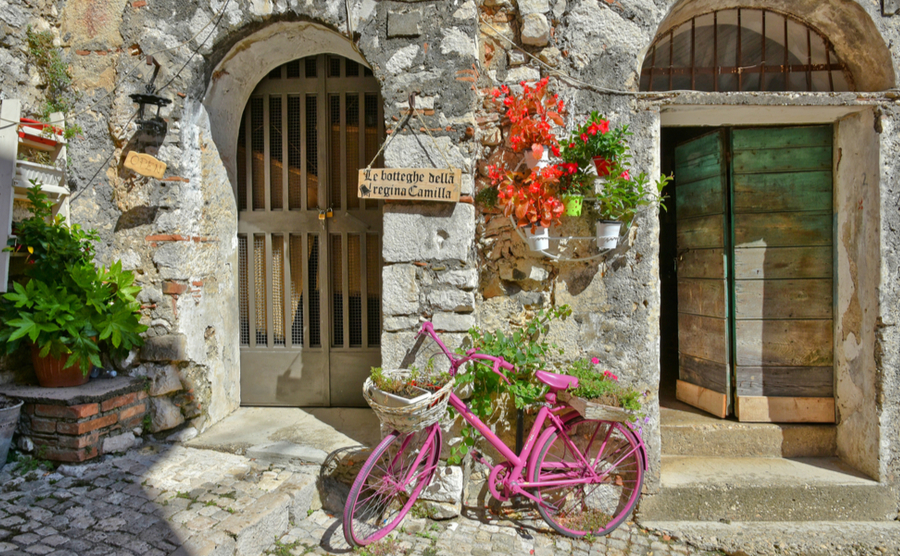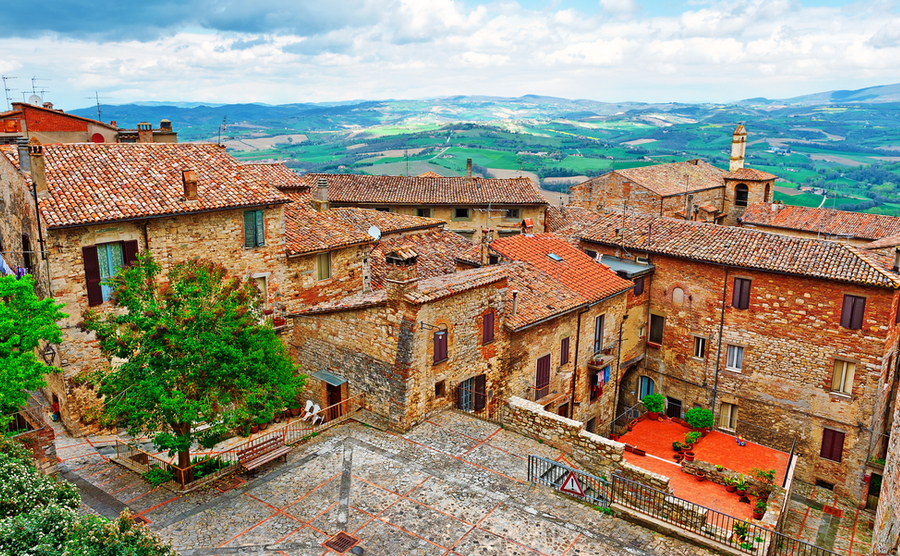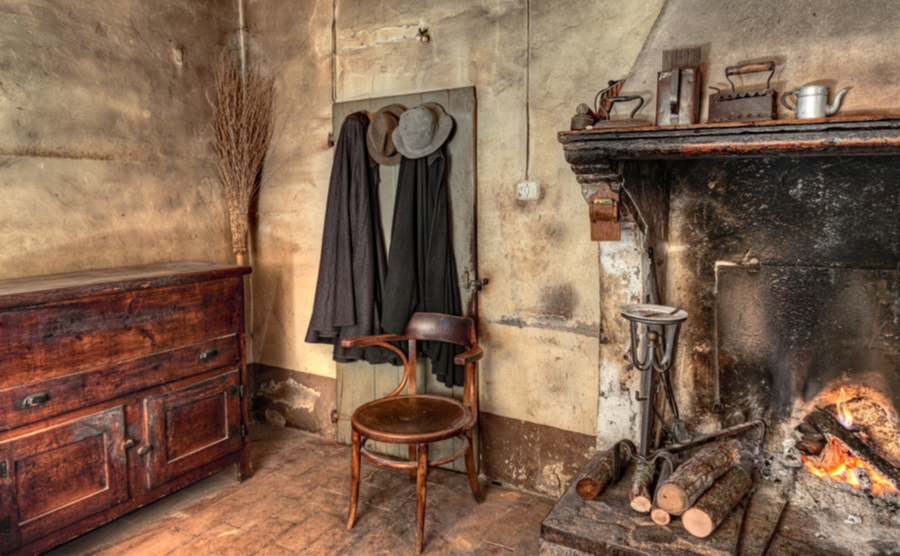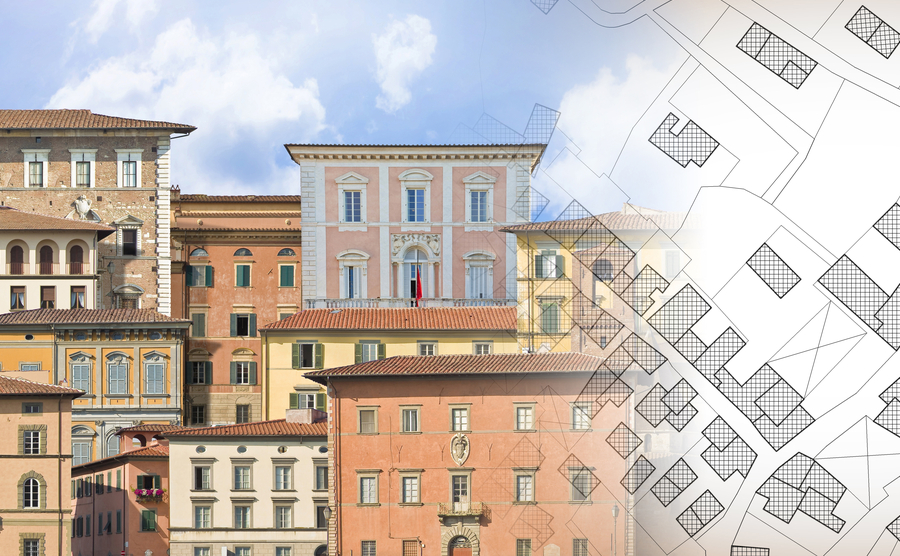If you’re looking to invest in Italian property or more specifically an old or traditional home in Italy, that needs a bit of work, there are a few things you should be aware of.
Italy is brimming with beautiful villages that instantly transport you to olden times when merchants traded in the town squares. It’s in these villages lots of international buyers fall in love with small-town Italy.

The door of an old stone houses of a medieval town in the Lazio region I Stock photo id: 1936519261 via Giambattista Lazazzera
Financial incentives to drive interest to older properties
There are lots of incentives available in Italy to drive tourism and popularity to smaller villages which have a low number of residents. Within these incentives, traditional Italian homes are often put on the market at a low price to attract interest.
It’s a shame, but the general attitude towards rundown or old buildings in Italy is one of almost total neglect.
The incentive aims to drive popularity to the idea of buying an old home in Italy. Then, the buyer can to save a bit of money that may be needed to renovate or modernise the property, however, that’s where the grey area lies.
Find homes in Italy via our property portal.

View of the Medieval City in Tuscany, Italy
The red tape that could hinder your Italian fixer-upper
The properties in these Italian homes are full of character and history, however there are building types that are often protected by the cultural heritage authority in Italy for their artistic significance.
There’s an Italian law “vincoli” which applies to old estates in Italy which are of either environmental or historic nature. This law states that these estates cannot be sold due to territorial boundaries. There are strict rules in place to preserve properties like this.
It’s worth knowing that certain features in Italian homes, i.e. frescoes, ancient loggias, decorated ceilings and lavish stonework, are ruled by art authorities, who will have the final say over any structural changes to the traditional features.

A traditional fireplace in an old Italian farmhouse
Things that could fall under this law include…
- Fortified medieval walls
- Wrought-iron balconies, gates
- Gothic infrastructure
- Frescoes
- Decorated fireplaces
While these features undoubtedly add beauty to a room, they might not be functional or worthwhile to your home. But it’s the art authorities that have the final say on any renovation work.
This could include small renovations such as knocking down a wall or adding an extra room to your home. The reasoning behind this ruling is due to the artistic and historic value that these traditional Italian features hold. To the Italian authorities, it’s considered a part of national heritage, therefore they are granted final say on what can and can’t be done.

The territorial map will record changes to the ancient property
How to avoid common pitfalls when buying an old home in Italy…
Check local maps and law
Speak to your local authorities to find out your home’s status (listed or not listed) and check territorial maps if it’s on a wider conservation area
Visit your local tax bureau ahead of purchase
This will make sure that your old home is registered “accatastata”. If it’s not, you could end up paying the same amount of tax on it that you would a new home.
Make sure to get a SCIA before doing any restoration work
An SCIA (Certified Start of Activity Report) is a documented communication that your local municipal office grants to declare you are permitted to carry out demolition, restoration or expansion works on your home.
Find a reputable geometra
A geometra is a professional who takes on the roles of architect, engineer and surveyor for homes that require major restorations. Their main tasks include managing paperwork needed for planning applications and drawing up plans for the restoration work. You can find local geometricians in the yellow pages (http://www.paginegialle.it/) or ask around locally.










